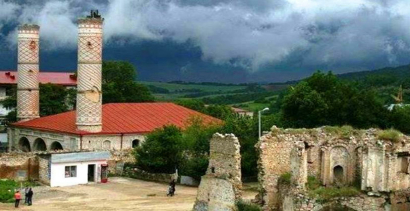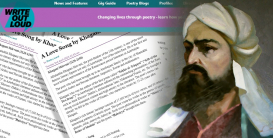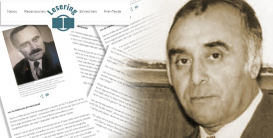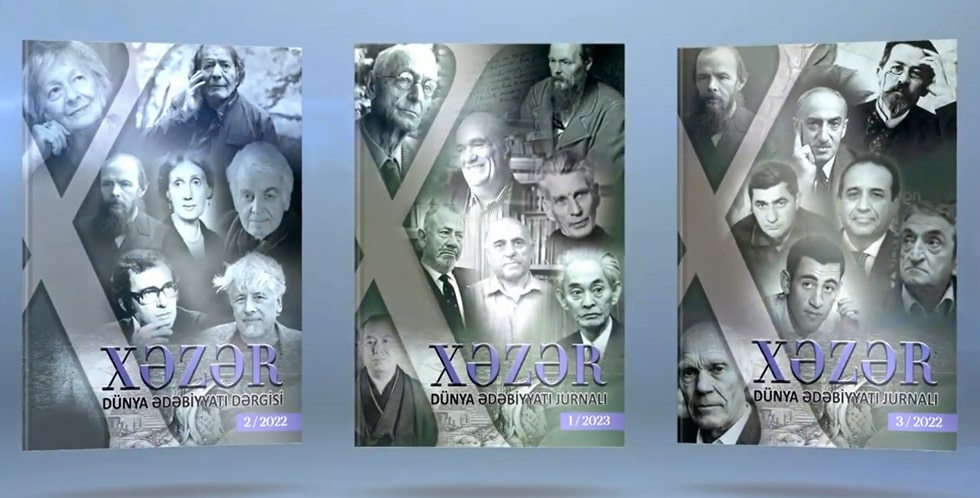The Realities of Shusha

The Azerbaijan State Translation Centre (AzSTC) has produced a documentary archival video footage “The Realities of Shusha” that features atrocities committed by Armenians, who were resettled to Nagorno-Karabakh under the Turkmenchay peace treaty between Russia and Iran, and who procreated acts of vandalism against ancient Shusha, its culture and national monuments as well as Azerbaijanis as a whole. AzSTC has sent the video footage with subtitles in English, Russian, Turkish, Persian, Arabic, Georgian, French, Ukrainian, Spanish and German languages to accredited foreign embassies and consulates to the Republic of Azerbaijan as well as distributed among influential global internet and social networks.
Karabakh is Azerbaijan!
The Realities of Shusha
Shusha, known as a temple and cradle of the mugham, is Azerbaijan’s cultural capital. The history of Shusha Fortress, built in the northern part of the city to protect against invaders from neighbouring territories, is particularly noteworthy.
Azerbaijan’s Panah-Ali Khan Karabaghli (1693–1763), who founded the Karabakh Khanate in 1747, ordered to construct the Fortress Shusha in 1752 to reinforce and provide battleship protection from foreign attack. This area of 5,500 sq. km. is also referred to as Panahabad Fortress in honour of its founder in historical sources, and a silver coin called "Panahabadi" was introduced. Under Karabakh’s second ruler Ibrahim Khalil Khan (1732–1806), the fortress, surrounded by a strong defensive wall, became home to various centres of handicraft, blacksmith and weapons. the manufacturing. Work of art made by masters of Shusha at that time became very popular in the near and far abroad. Flames of fire, a tiger - the symbol of power and the Karabakh horse proudly standing in the green valley are depicted on the emblem of Shusha. Shusha consisting of 17 quarters is famous for its baths, mosques and springs in each district.
In the early 18th century Shusha became the centre of the Karabakh Khanate and one of the most important cultural centres of Azerbaijan since the 18th century. It was known throughout the world as "Little Paris", "Temple of Art of the Caucasus", "The Cradle of Azerbaijan Music", and "Transcaucasian Conservatory". And the word 'Armenia' is found neither in historical documents, nor in literature sources of that time.
https://az.wikipedia.org/wiki/
The Kurakchay treaty on the annexation of Karabakh to Russia was signed on May 14, 1805 by the commander-in-chief of the Russian troops in the Caucasus, Pavel Sisianov and Ibrahim Khalil Khan. During this period, Russia unequivocally recognized the Karabakh Khanate as an independent state, approved Ibrahim Khalil Khan and his successors as the sole owners of the khanate. Ibrahim Khan’s signature in all articles of those documents was written as "Ibrahim Khan Karabaghli of Shusha".
http://www.virtualkarabakh.az/az/post-item/32/52/kurekcay-muqavilesi.html
In later years, the Armenians, who were settled to Karabakh due to the signed Turkmenchay peace treaty on February 10, 1828, launched a planned operation to take over Shusha and other historically Azerbaijani territories in accordance with the policy of tsarist Christianization. At that time, after the appointment of Valerian Grigorievich Madatov, the Russian general of Armenian descent, as the commandant of Shusha, the resettlement of Armenians to these territories became more intense. Famous Russian artist Vasily Vereshchagin visited Shusha in May 1865 and stayed there for about three months. After returning to Paris, he painted a series of paintings about Shusha. All these pictures, among others, "Shusha Mosque", " A Religious Procession of the Moharrem Celebration at Shusha", "The Muslim School", and "Guest House of a Rich Azerbaijani in Shusha" are currently housed at the Hermitage Museum in St.Petersburg, Russia.
https://ru.wikipedia.org/wiki/Şuşa
In 1988, after the meetings organized by Armenian separatists with territorial claims in the Nagorno-Karabakh region of Azerbaijan, Armenian forces launched armed attacks on the territories of Azerbaijan. And the ancient Azerbaijani city of Shusha was captured by Russian-Armenian military units on May 8, 1992. Armenians destroyed about 600 historical and architectural monuments in Shusha, including the Jidir Plain where the Karabakh Khanate held horse-races and Novruz Holiday, Panahali Khan Palace, the Yukhari Govhar Agha and Ashagi Govkhar Agha Mosques, the House of Khurshidbanu Natavan, the notable woman-poet of the East, the mausoleum of Molla Panah Vagif, the famous poet, who was the vizier of the Karabakh Khanate, house-museums of Uzeyir Hajibeyli, the founder of the first Azerbaijani opera and symphonic music, Bulbul, the great Azerbaijani musician, and Mir Mohsun Navvab, an Azerbaijani musician and artist, were barbarously destroyed; more than 10 000 exhibits from the national museum funds, 1,000 items of the State Museum of Applied Art were looted and brought to Armenia. In general, more than 60 libraries, museums, music schools and the ancient Muslim cemetery of the city were completely destroyed.
https://az.wikipedia.org/wiki/
The truth and justice will sooner or later come out eventually...
Although Azerbaijan has longed for Shusha for 28 years, with great patience and persistence awaiting the return of its occupied lands without bloodshed, war, in accordance with international law, the issue remained on paper, other Azerbaijani territories, peaceful Azerbaijanis continued to face enemy’s provocations. Finally, the Head of State, the Supreme Commander of Azerbaijan, Ilham Heydar oglu Aliyev, proposed a military solution to the issue in order to replace the lost Armenians.
Beginning with October 27, 2020 the victorious Azerbaijani Army under the leadership of Ilham Aliyev, Supreme Commander-in-Chief has liberated our lands from the invaders village by village, city by city, raising our tricolour magnificent flag, and on November 8, splicing our native Shusha we had been longing for. November 10 is a glorious Victory Day, restoring Azerbaijan’s territorial integrity...
AND OTHER...
-
 Khagani Shirvani’s Creativity on the Literary Portal of England
Khagani Shirvani’s Creativity on the Literary Portal of England
“Write Out Loud”, the leading poetry portal of England, has posted in English the ghazal “A Love Song” by the great Azerbaijani poet Khagani Shirvani as part of the...
-
 Isi Malikzade’s Creativity on German Literature Magazine
Isi Malikzade’s Creativity on German Literature Magazine
LESERING.de, a popular German e-literature magazine, has posted in German the short story Salt by Isi Malikzade, the notable Azerbaijani writer, as part of the AzSTC project “Azerbaijan Literature in an International Virtual World”.
-
 Movlud Movlud’s Short Story on Turkish Portals
Movlud Movlud’s Short Story on Turkish Portals
“Detayhaberler.com”, “Dibace.net” and “Haber.232.com”, leading Turkish portals, have posted in Turkish the short story “We Have Already Grown Up” by the...









